Michael Johnston's Blog, page 15
July 22, 2013
Back to the lighthouse: the next book reading group meeting has three novels to study
Today I am marooning my book reading group in an imaginary lighthouse with nothing to read but a trio of books which are very much worth reading and have in common that they delay the punch line until the last possible moment. At a first reading, the final chapter, page, or word even, comes as a complete surprise and an aesthetic and literary satisfaction. No doubt you could add more books to this list but, first of all, read about my three choices.
 William Faulkner wrote and published As I Lay Dying in 1930 and wonderfully, for a book he claimed to have written in six weeks and never changed a word, it very soon became accepted as a 20th century classic that has never been out of print. Faulkner is an American Southerner, culturally very different from the literary traditions of, for example, laid back Californians, Jewish New Yorkers, or, in a class by himself, Thomas Pynchon. He sets his stories in the fictional location of Yoknapatawpha County, Mississippi, loosely based on his own Mississippi county of Lafayette.
William Faulkner wrote and published As I Lay Dying in 1930 and wonderfully, for a book he claimed to have written in six weeks and never changed a word, it very soon became accepted as a 20th century classic that has never been out of print. Faulkner is an American Southerner, culturally very different from the literary traditions of, for example, laid back Californians, Jewish New Yorkers, or, in a class by himself, Thomas Pynchon. He sets his stories in the fictional location of Yoknapatawpha County, Mississippi, loosely based on his own Mississippi county of Lafayette.
Faulkner has an amazing fifteen different stream-of-consciousness narrators including the dying and later dead Addie Bundren. As the story opens, Addie, wife of Anse and matriarch of a poor white trash southern family, is on her way to death while her dysfunctional family adjust, or fail to adjust, to this inevitability. Outside her bedroom window, her carpenter son Cash is lovingly crafting his mother’s coffin. Two other sons reckon she will last until they get back from making a delivery but they have scarcely left before she dies. The women place Addie in her coffin backwards so that the widest part of the coffin allows the wedding dress she is buried in to remain unwrinkled. While Cash complains that this makes the carefully designed coffin unbalanced, her son Vardaman is so much disturbed by the fact that his mother is nailed up inside a box that he sneaks out and bores holes in the lid; two of which go through his mother’s face.
Addie has extracted a promise from Anse that she will be buried in Jefferson and it is the horrendous journey there, including getting across a flooded river, which leads to disaster piling on disaster. In the climax to the river scene, the wagon overturns, the mules drown and the coffin has to be rescued. Cash’s tools have to be dredged up from the river bed and his already damaged leg is broken a second time. They can’t afford medical treatment so Anse puts a concrete cast on it, leaving Cash in agony. Through a series of adventures and misadventures we learn that daughter Dewey Dell is pregnant and trying to procure an abortion. A pharmacy store clerk tricks her into sex pretending he will give her the necessary medication. At last they reach Jefferson and bury Adie and Anse takes the ten dollars Dewey Dell has been given to procure her abortion, and goes into town where he uses the money to get a set of false teeth and … and what? Despite the doom and gloom of this account, the book is an utterly compelling read and the total surprise comes in the very final sentence.
 William Golding is well known as the author of Lord of the Flies and for his trilogy, To the Ends of the Earth but the story that you will be taking to your lighthouse is The Paper Men, published in 1984. To quote from Wikipedia’s succinct summary,
William Golding is well known as the author of Lord of the Flies and for his trilogy, To the Ends of the Earth but the story that you will be taking to your lighthouse is The Paper Men, published in 1984. To quote from Wikipedia’s succinct summary,
The protagonist in the novel is Wilfred Barclay, a curmudgeonly writer who has a drinking problem, a dead marriage, and the incurable itches of middle-aged lust. Barclay is irritated by a young professor, Rick Tucker, who is determined to write Barclay’s biography and is desperate to gain control of the writer’s personal papers. Tucker pursues Barclay across Europe and both men sacrifice relationships, self respect, and ultimately themselves in this lethal pursuit. The ending is both inevitable and shocking and exposes the desperation of the literary biographer and the determination of the subject to maintain control over the story of his own life.
The end does come as a literal and literary surprise and, as with the Faulkner, the denouement does not occur until not just the last sentence but the very last word.
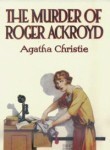 The final member of this trio is a novel by the prolific and highly successful Agatha Christie whose novel The Mouse Trap seems to go on forever and forever in its stage version, still filling the theatre for more than 50 years. Like The Sound of Music, some people have been several times! However, the book I want to recommend is The Murder of Roger Ackroyd in which Christie uses what would nowadays be called post-modernist techniques. It is a mystery that puts Hercule Poirot’s little grey cells to the test because there are, inevitably many potential suspects. He has as his assistant Dr James Sheppard, fulfilling the role later taken on by Captain Hastings, and it is the doctor who narrates the story as it unfolds through many twists and turns like a typical detective novel of the period, 1926, in which a large group of middle to upper class people, two policemen and a lawyer find themselves together at the moment when one of them, in this case Roger Ackroyd, is murdered.
The final member of this trio is a novel by the prolific and highly successful Agatha Christie whose novel The Mouse Trap seems to go on forever and forever in its stage version, still filling the theatre for more than 50 years. Like The Sound of Music, some people have been several times! However, the book I want to recommend is The Murder of Roger Ackroyd in which Christie uses what would nowadays be called post-modernist techniques. It is a mystery that puts Hercule Poirot’s little grey cells to the test because there are, inevitably many potential suspects. He has as his assistant Dr James Sheppard, fulfilling the role later taken on by Captain Hastings, and it is the doctor who narrates the story as it unfolds through many twists and turns like a typical detective novel of the period, 1926, in which a large group of middle to upper class people, two policemen and a lawyer find themselves together at the moment when one of them, in this case Roger Ackroyd, is murdered.
What the Wikipedia article describes as the juxtaposition of two knowledge systems compares and contrasts two approaches to detection. “[In] the novel, Christie has laid side by side two modes of gathering of information and building of [hypotheses.] One is Poirot’s use of ratiocination, the other is the channel of gossiping, practised by almost all inhabitants of [the fictional village of] King’s Abbott, in particular, Caroline. While even Caroline is able to interpret certain situations correctly, Christie privileges scientific mode of investigation by unveiling the murderer through Poirot.”
The revelation of the killer’s identity produced appreciative surprise and the feeling of having been cheated in about equal measure. If you haven’t read it before, you are in for a treat but if you have read it then you will enjoy waves of nostalgia as the story unfolds.
The post Back to the lighthouse: the next book reading group meeting has three novels to study appeared first on Michael Johnston's blog/website (akanos.co.uk).
July 18, 2013
Book reading groups recommendations: avid book readers should buy these three novels reviewed here
 All Dogs are Blue by the late Rodrigo de Souza Leão and translated by Zoë Perry & Stefan Tobler has an introduction from prize winning author Deborah Levy that puts it in context. It is Book 11 from the enterprising subscription publisher & other stories. The names of the current roughly 700 subscribers, listed in order of given, not family, name can be seen at the back of the book. The publisher’s eclectic list has many novels in translation that would not otherwise be seen in the UK or USA. This book is, according to the blurb, ‘a scurrilously funny tale of life in a Rio de Janeiro insane asylum. Kept awake by blaring Rio funk and fantasies about his aunt, the narrator misses his old toy dog, keeps company with Rimbaud and Baudelaire, and becomes the leader of a popular cult. “We’re the minority,” says the narrator, “but at least I say what I want.” All Dogs are Blue is an extraordinary outpouring about mental illness and its controversial treatment, revealing the illumination of the ill in a troubled society.’ Insofar as he can, the author takes us inside the troubled mind of the narrator and makes the book a fascinating and usefully disturbing experience.
All Dogs are Blue by the late Rodrigo de Souza Leão and translated by Zoë Perry & Stefan Tobler has an introduction from prize winning author Deborah Levy that puts it in context. It is Book 11 from the enterprising subscription publisher & other stories. The names of the current roughly 700 subscribers, listed in order of given, not family, name can be seen at the back of the book. The publisher’s eclectic list has many novels in translation that would not otherwise be seen in the UK or USA. This book is, according to the blurb, ‘a scurrilously funny tale of life in a Rio de Janeiro insane asylum. Kept awake by blaring Rio funk and fantasies about his aunt, the narrator misses his old toy dog, keeps company with Rimbaud and Baudelaire, and becomes the leader of a popular cult. “We’re the minority,” says the narrator, “but at least I say what I want.” All Dogs are Blue is an extraordinary outpouring about mental illness and its controversial treatment, revealing the illumination of the ill in a troubled society.’ Insofar as he can, the author takes us inside the troubled mind of the narrator and makes the book a fascinating and usefully disturbing experience.
Levy writes: ‘All Dogs are Blue is a comic modernist novel about being messed up – and then being messed up even more by even more numbing doses of pharmaceuticals. Rodrigo de Souza Leão is very clear about what has happened to his thirty-six-year-old narrator. He has swallowed ‘a chip’, and the chip makes him do things he doesn’t want to do. […] Souza Leão’s autobiographical novel is about a whole lot of other things too: the drunken street sweepers from the favelas who somehow also end up in the asylum; the narrator’s teenage years growing up bookish and paranoid; [and] a blue toy dog which is both childhood companion and the colour of the narrator’s medication. […] If life in an insane asylum is actually very dull, Souza Leão’s subtle achievement is that he evokes the dull and deadening days without ever being boring or making them more exotic than they are. Everything that is interesting about the novel can be found in its light, laconic tone.’
For Levy, the novel reminds her of Houellebecq’s first novel Extension de la domaine de la lutte (or Whatever) and I found myself thinking of The Curious Incident of the Dog in the Night-Time by the very sane Mark Haddon and, at the same time, of a book by the maestro William Faulkner, The Sound and the Fury. This novella is well worth reading and my personal rating would be 7 out of 10.
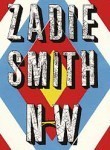 Zadie Smith is a writer to make lesser novelists green with envy. As in all her earlier novels, the succinctly titled N W takes the reader inside the thoughts, language and idioms of its four main characters; Londoners who grew up in an NW London housing estate and made their separate later lives, yet still shaped by their NW roots. Leah, Natalie, Felix and Nathan seem to make the old but telling point about being able to take the children out of NW but not take NW out of the children. Smith’s very special gift is the way she captures the individual voices of her characters which she does by the shape of her sentences, the inflection of their speech and her empathy with their not-so-much predetermined but clearly circumscribed lives. To quote from NW would tend to destroy the essential context a reader needs so you will have to read it yourself to understand fully what I felt.
Zadie Smith is a writer to make lesser novelists green with envy. As in all her earlier novels, the succinctly titled N W takes the reader inside the thoughts, language and idioms of its four main characters; Londoners who grew up in an NW London housing estate and made their separate later lives, yet still shaped by their NW roots. Leah, Natalie, Felix and Nathan seem to make the old but telling point about being able to take the children out of NW but not take NW out of the children. Smith’s very special gift is the way she captures the individual voices of her characters which she does by the shape of her sentences, the inflection of their speech and her empathy with their not-so-much predetermined but clearly circumscribed lives. To quote from NW would tend to destroy the essential context a reader needs so you will have to read it yourself to understand fully what I felt.
As well as being short-listed for the Women’s Prize for Fiction in 2013, it was chosen as their ‘book of the year’ by at least 18 reviewers, say 19 including myself. I rate this title as up there with Zadie Smith’s earlier White Teeth and better than both On Beauty and The Autograph Man. As far as tragic-comedies about Londoners are concerned, I place this higher than Martin Amis’s Money, giving it a rating of 9 out of 10.
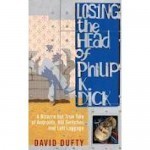 And now, as they used to say, for something completely different! I bought this book because I am a fan of the sci-fi writer and guru, Philip K Dick, about whom I will not hear a word of criticism. I was delighted when Do Androids Dream of Electric Sheep was on the reading list for my MA and I devoured it, together with several viewings of Blade Runner. I stumbled across the intriguing book title: Losing the Head of Philip K Dick by David Dufty quite by accident, or, in truth, quite by Goggle’s amazing serendipity.
And now, as they used to say, for something completely different! I bought this book because I am a fan of the sci-fi writer and guru, Philip K Dick, about whom I will not hear a word of criticism. I was delighted when Do Androids Dream of Electric Sheep was on the reading list for my MA and I devoured it, together with several viewings of Blade Runner. I stumbled across the intriguing book title: Losing the Head of Philip K Dick by David Dufty quite by accident, or, in truth, quite by Goggle’s amazing serendipity.
Described as ‘a bizarre but true tale of Androids, Kill Switches, and Left Luggage’, the story begins by doing just what it says on the cover.
In December 2005, an android head went missing from an American West Airlines flight between Dallas and Las Vegas. The roboticist who built it, David Hanson, had been transporting it to northern California, to the headquarters of Google, where it was scheduled to be the centrepiece of a special exhibition for the company’s top engineers and scientists. [Hanson] had worked late the night before on his presentation for Google and was tired and distracted when he boarded the 5 a.m. flight at the Dallas-Fort Worth International Airport. [He] had fallen asleep on the Dallas-Las Vegas leg so, after the other passengers had disembarked, a steward touched his shoulder to wake him and asked him to leave the plane. Dazed, Hanson grabbed the laptop at his feet and left, forgetting that he had stowed an important item in the overhead compartment: a sports bag. Inside was an android head. The head was a lifelike replica of Philip K Dick, the cult science-fiction author and counter-culture guru who had died in 1982. Made of plastic, wire, and a synthetic skinlike material called Frubber, it had a camera for eyes, a speaker for a mouth, and an artificial-intelligence simulation of Dick’s mind that allowed it to hold conversations with humans. [pp. 1-2]
The book goes on to recount the story of how a group of young robot designers and computer scientists dreamed up the fantastic and audacious idea of building an android modelled on Philip K Dick. Dufty deftly weaves the various strands of the story, as complex as a wiring diagram but easy to follow in this well-written account, not only giving credit to the software designers, the grant-giving bodies and the selfless donation of thousands of man-hours by assorted experts, but also showing how Dick was the ideal choice to become the world’s first android to host something like a chat show.
The author was a postdoctoral researcher at the University of Memphis in 2005 where most of the events took place and where he was on the periphery of events he relates. That said, he turns out to be the natural person to put together this altogether gripping account of the creation, triumph and total loss of the head of Philip K Dick. Readers interested to know more about the human version of Philip K Dick should get hold of the biography, I am alive and you are dead: a journey inside the mind of Philip K Dick by Emmanuel Carrère which I rate the best of the several biographies. As for David Dufty’s book, I give it 8 out of 10. Now read on …
The post Book reading groups recommendations: avid book readers should buy these three novels reviewed here appeared first on Michael Johnston's blog/website (akanos.co.uk).
July 12, 2013
A testing post for new subscribers…
Welcome
This post should trigger a New Posting email to subscribers and will shortly be deleted!!
The ideal is that the email only provides an opening teaser snippet – so they click to come to the website to read the rest of the posting and explore the website…
Lorem Ipsum is simply dummy text of the printing and typesetting industry. Lorem Ipsum has been the industry’s standard dummy text ever since the 1500s, when an unknown printer took a galley of type and scrambled it to make a type specimen book. It has survived not only five centuries, but also the leap into electronic typesetting, remaining essentially unchanged. It was popularised in the 1960s with the release of Letraset sheets containing Lorem Ipsum passages, and more recently with desktop publishing software like Aldus PageMaker including versions of Lorem Ipsum.
The post A testing post for new subscribers… appeared first on Michael Johnston's blog/website (akanos.co.uk).
July 10, 2013
Book reading groups! Follow a theme next season: go to India!
All book reading groups are good things and I commend their efforts. Some, however, want to try, in the time-honoured phrase, something different, such as pursuing a theme, for example, the works of a single writer; but probably more varied and interesting would be novels about a place: a part of a city, the city itself, or the country; works which refract that country through several individual prisms.
Book Groups – Take ‘India’ for example
In our youth, we all read The Raj Quartet, Bhowani Junction, and The Far Pavilions; all excellent in their way and giving readers the chance to live vicariously in pre-independence India and to learn that pyjamas and bungalow are really Hindi words. To repeat the exercise today, from the large pool of Indian English literature, here are a few suggestions for book reading groups.
 The God of Small things is the debut novel of Arundhati Roy and, as of today, her only novel since she has opted to devote her time and her considerable, and well-deserved, royalties to championing the under-privileged in India. In style, the novel is somewhat Modernist and the events are not related chronologically. To say too much about any book can be to spoil its impact for new readers so all I will say is that it is set in Kerala and deals with twins who were separated at birth and are now reunited. If that sounds too secretive, this is a quotation from the book itself.
The God of Small things is the debut novel of Arundhati Roy and, as of today, her only novel since she has opted to devote her time and her considerable, and well-deserved, royalties to championing the under-privileged in India. In style, the novel is somewhat Modernist and the events are not related chronologically. To say too much about any book can be to spoil its impact for new readers so all I will say is that it is set in Kerala and deals with twins who were separated at birth and are now reunited. If that sounds too secretive, this is a quotation from the book itself.
It didn’t matter that the story had begun, because Kathakali discovered long ago that the secret of the Great Stories is that they have no secrets. The Great Stories are the ones you have heard and want to hear again. The ones you can enter anywhere and inhabit comfortably. They don’t deceive you with thrills and trick endings.
Roy was awarded the Booker Prize for her book in 1997 for a work that sparked renewed interest in the contemporary literature of the subcontinent.
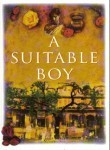 A Suitable Boy by Vikram Seth might never have been published if the much-respected literary agent Giles Gordon had not been immobilised in hospital when the manuscript, standing a metre high, was delivered. He had the enforced leisure to read it. Not so much a book as a saga, it runs to nearly 1,500 pages in the paperback edition. Gordon was hooked, as were the publishers and the public. The story is set in post-independence, post-partition India in the fictional city of Brahmpur and deals with the efforts of Mrs Rupa Mehra to arrange a marriage for her 19-year-old daughter Lata with, of course, a suitable boy. While Lata and her three suitors form the core of the story, it is carefully set against the very real issues and background of India in the 1950s.
A Suitable Boy by Vikram Seth might never have been published if the much-respected literary agent Giles Gordon had not been immobilised in hospital when the manuscript, standing a metre high, was delivered. He had the enforced leisure to read it. Not so much a book as a saga, it runs to nearly 1,500 pages in the paperback edition. Gordon was hooked, as were the publishers and the public. The story is set in post-independence, post-partition India in the fictional city of Brahmpur and deals with the efforts of Mrs Rupa Mehra to arrange a marriage for her 19-year-old daughter Lata with, of course, a suitable boy. While Lata and her three suitors form the core of the story, it is carefully set against the very real issues and background of India in the 1950s.
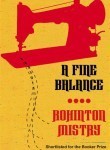 A Fine Balance by the Indian-born, Canadian writer, Rohinton Mistry is another doorstep of a book that almost needs two hands to carry but these hands will hold within them a wide ranging tale of India during Mrs Ghandi’s State of Emergency, a period of much expanded government powers and a severe crackdown on civil liberties. The stories of four characters living in and around what is obviously based on Mumbai are sewn together by the events and the sewing machine which is almost a character in its own right. Some critics have compared the sweep of the book’s narrative with Charles Dickens and one could certainly compare and contrast it with Dombey and Son.
A Fine Balance by the Indian-born, Canadian writer, Rohinton Mistry is another doorstep of a book that almost needs two hands to carry but these hands will hold within them a wide ranging tale of India during Mrs Ghandi’s State of Emergency, a period of much expanded government powers and a severe crackdown on civil liberties. The stories of four characters living in and around what is obviously based on Mumbai are sewn together by the events and the sewing machine which is almost a character in its own right. Some critics have compared the sweep of the book’s narrative with Charles Dickens and one could certainly compare and contrast it with Dombey and Son.
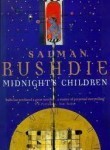 Midnight’s Children by Salman Rushdie is a book of magical realism based on the concept that every child born at that midnight hour in 1947 (when, on the stroke of twelve, two separate states, India and Pakistan, were created out of colonial India) has telepathic powers enabling them to communicate with each other.The novel went on straight away to win the Booker Prize in 1981. Saleem Sinai, the chief protagonist tells the story which is set against the actual events of those years after independence.
Midnight’s Children by Salman Rushdie is a book of magical realism based on the concept that every child born at that midnight hour in 1947 (when, on the stroke of twelve, two separate states, India and Pakistan, were created out of colonial India) has telepathic powers enabling them to communicate with each other.The novel went on straight away to win the Booker Prize in 1981. Saleem Sinai, the chief protagonist tells the story which is set against the actual events of those years after independence.
 A Son of the Circus is by John Irving. In his Author’s Notes, he writes: “This novel isn’t about India. I don’t know India […] When I was there, I was struck by the country’s foreignness; it remained obdurately foreign to me. […] I began to imagine a man who has been born there and has moved away [yet] who keeps coming back again and again. […] with each return trip, his sense of India’s foreignness only deepens.” Yet, for most readers, this book really is about India besides being a thrilling detective story and a real page-turner.
A Son of the Circus is by John Irving. In his Author’s Notes, he writes: “This novel isn’t about India. I don’t know India […] When I was there, I was struck by the country’s foreignness; it remained obdurately foreign to me. […] I began to imagine a man who has been born there and has moved away [yet] who keeps coming back again and again. […] with each return trip, his sense of India’s foreignness only deepens.” Yet, for most readers, this book really is about India besides being a thrilling detective story and a real page-turner.
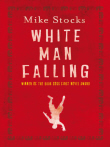 White Man Falling by Mike Stocks is much less well-known and that is a real shame. For a white author, he manages to think himself inside the skin of Sub-Inspector (retired) R M Swaminathan and into the language and atmosphere of southern India in a way that few could emulate. The Sub-Inspector (retired) wants to know why a white man fell off a balcony and finds the explanation more complex than at first sight. A splendid book!
White Man Falling by Mike Stocks is much less well-known and that is a real shame. For a white author, he manages to think himself inside the skin of Sub-Inspector (retired) R M Swaminathan and into the language and atmosphere of southern India in a way that few could emulate. The Sub-Inspector (retired) wants to know why a white man fell off a balcony and finds the explanation more complex than at first sight. A splendid book!
But I’ve already read them all!
There is a fair chance that book reading group members will have read some or all of these suggestions. However, a good book is like that famous river; you can never enter the same book twice: it will have changed because we, as readers have changed since last we opened it. Each of them is worth another reflective reading.
The post Book reading groups! Follow a theme next season: go to India! appeared first on .
June 27, 2013
Book Reading Group Alert: Rustication by Charles Palliser
Due out in November, Palliser’s new book Rustication should appeal to all his many fans and to book reading groups looking for a meaty book to chew over. Although Palliser first published Quincunx in 1989, it was such a success, selling literally millions of copies worldwide, that he was free to decide to live by the pen ever since. Would you believe I thought he was Scottish because he was teaching in Glasgow but it turns out he moved to the UK when he was only three and he is now 65! Here’s what Wikipedia says about Quincunx.
The Quincunx (The Inheritance of John Huffam) is the epic first novel of Charles Palliser. It takes the form of a Dickensian mystery set in early 19th century England, but Palliser has added the modern attributes of an ambiguous ending and unreliable narrators. Many of the puzzles that are apparently solved in the story have an alternative solution in the subtext.
His second novel, The Sensationalist, which came out in 1991, appealed rather less which may have been its subject matter rather than its literary style. However, it did rather stand in the long shadow cast by The Quincunx. I say it is well worth reading. Then, in 1993, he brought out Betrayals, which is another brilliant story constructed with the attention to detail of a Swiss watch. Here’s the first paragraph of the blurb on Amazon.
At once a hypnotic murder mystery, scathing literary parody, soap opera, and brilliant pastiche, Betrayals is an astonishing virtuoso performance by a modern master of literary gamesmanship in the tradition of Vladimir Nabokov and John Barth. The novel unfolds in a series of seemingly unrelated narratives, each written in a different style — indeed, in a different genre. There is an obituary for a Scottish scientist and Nobel Prize winner, written by a colleague who clearly relishes his death. Early in the century, a train in the Scottish Highlands heads down the wrong track during a winter snowstorm, and the passengers are forced to abandon the train, resulting in the death — or is it murder? — of one of them. An inane publisher’s reader summarizes the plot of a tacky hospital romance novel, which ends in a gory murder all too reminiscent of Jack the Ripper. Even a report on a contemporary academic controversy explodes into a scandal of plagiarism, shattered reputations, paranoia, and suicide — or is it murder made to look as such?
Then Palliser wrote The Unburied which was published in 1999, six years later, is another provocative murder mystery. Some critics said that Palliser had very effectively unburied Wilkie Collins and, indeed, the book would have been a credit to that master-craftsman.
Advice to book reading groups: Plan Ahead!
We have had to wait a suspense-filled fourteen years for the latest Palliser novel. Since book groups have to plan their reading programmes well in advance, I urge them to put Rustication on order now and get together in the New Year to discuss it.
June 7, 2013
Book Reading Group Recommendation: The Art Forger by B A Shapiro
My reading in recent years has included a fair amount on art forgery, both while I was writing Rembrandt Sings and afterwards. Right now I am working my way through a serious tome: Art Forgery: The History of a Modern Obsession by Thierry Lemain where I was struck right away by the difference he points up between literary forgeries and art forgeries. Literary forgeries, he says, never consist in forging an original object but, by contrast, that is what art forgeries are all about. Up to a point, Professor, but only up to a point!
Many novels, not just mystery and crime, seek to create what critics call Realism; a funny word which these critics use to mean the story isn’t real; it’s been made up but the author has gone to great lengths to make is seem realistic. Real places, real events and some real people are mentioned to add to that sense of reality but it is a conjuring trick. The author/magician is using the genuinely real to distract our attention from the fact that the rest of the story is fiction.
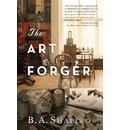 I get the best of both worlds from reading (and writing) novels about art forgery. One very recent example is the clever story with the title which does what it says on the dust jacket: The Art Forger. Barbara Shapiro, who teaches creative fiction at Northeastern University, takes as her central character and narrator recently graduated artist Claire Roth, who is struggling to make any impact on the contemporary art scene in Boston and beyond. She has several things working against her. First, she values the painterly qualities that develop from using the techniques of major artists of earlier periods; building layer upon layer of colour and varnish, baking them dry, then painting wet-on-dry to create the luminosity of their paintings rather than, say, abstract expressionists who can’t wait until the previous layer has dried to slap on more paint, wet-on-wet, as well as scraping away the built up layers to expose the scaffolding. Her painting preferences do mean that she is the one to turn to if you want to commission a reproduction (not, let’s be clear, a forgery) of a subject previously painted by Degas. She makes something of a living out of this but receives maybe a tenth of what the dealer will charge clients who want an ersatz Degas, maybe even to match their drapes, but who do not have the wealth to bid for the scarce and expensive real thing.
I get the best of both worlds from reading (and writing) novels about art forgery. One very recent example is the clever story with the title which does what it says on the dust jacket: The Art Forger. Barbara Shapiro, who teaches creative fiction at Northeastern University, takes as her central character and narrator recently graduated artist Claire Roth, who is struggling to make any impact on the contemporary art scene in Boston and beyond. She has several things working against her. First, she values the painterly qualities that develop from using the techniques of major artists of earlier periods; building layer upon layer of colour and varnish, baking them dry, then painting wet-on-dry to create the luminosity of their paintings rather than, say, abstract expressionists who can’t wait until the previous layer has dried to slap on more paint, wet-on-wet, as well as scraping away the built up layers to expose the scaffolding. Her painting preferences do mean that she is the one to turn to if you want to commission a reproduction (not, let’s be clear, a forgery) of a subject previously painted by Degas. She makes something of a living out of this but receives maybe a tenth of what the dealer will charge clients who want an ersatz Degas, maybe even to match their drapes, but who do not have the wealth to bid for the scarce and expensive real thing.
Claire has another problem that is hinted at, glancingly referred to but not spelled out at the outset so as to maintain the suspense and paint on more layers of mystery. There is something in her recent past that means she is persona non grata in the gallery world, and among dealers who might exhibit and sell her work. She has had some association with an established artist who was her tutor on her degree course. Shapiro slowly lets the reader into the secret.
The novel starts from the fact that the Isabella Stewart Gardner Museum in Boston, holding and showing, under very strict bequest conditions, the art collection of the wife of a Boston Brahmin of the nineteenth century in what was the lady’s own home; and from the fact that on March 18, 1990 some wicked men, dressed as policemen, broke in and stole thirteen works of art that might fetch $500 million at auction today – probably more because of their now even more interesting provenance. They have never been recovered or returned. From time to time, we are allowed mostly fictional insights into the mind and mores of this lady in the form of letters the novel’s Isabella might have written from Paris to her niece back home in Boston.
Weaving these strands together, the novel opens with Claire Roth running round and round her studio pulling together examples of her work to show to a dealer, the man with the up-market gallery who was her erstwhile tutor’s agent, who has, out of the blue, said he wants to come round and see what she is doing. Now, it is a well-established fact that dealers in possession of a gallery do not need to visit struggling artists’ studios. With one phone call they can bring them all running to their gallery. So what’s it all about and why does someone who has previously shunned her want to spend time with her work and in her studio?
Since this book is a crime thriller, there are clues put in front of the reader, but hidden in plain view, and Shapiro is the master of the slow reveal in a volume of the seven veils. To tell more of the story would risk spoiling it for readers and if anything is a crime that surely is. Important then to say only that with her knowledge of her subjects, Boston, the art scene, painters’ techniques and the work of Edgar Degas builds up a gripping and convincing story that does not have a happy but rather an uplifting ending. It will appeal across a wide spectrum from readers of crime fiction, lovers of art and those like you and me who enjoy watching characters we have taken a shine to work out their problems, meet and overcome their challenges, and it will be a joy especially to lovers of finely crafted language.
I rate The Art Forger 8 out of 10 which means I shall be looking out for more by this creative writer. Who would think that art forgery could be such fun?
Book Review: The Art Forger by B A Shapiro
My reading in recent years has included a fair amount on art forgery, both while I was writing Rembrandt Sings and afterwards. Right now I am working my way through a serious tome: Art Forgery: The History of a Modern Obsession by Thierry Lemain where I was struck right away by the difference he points up between literary forgeries and art forgeries. Literary forgeries, he says, never consist in forging an original object but, by contrast, that is what art forgeries are all about. Up to a point, Professor, but only up to a point!
Many novels, not just mystery and crime, seek to create what critics call Realism; a funny word which these critics use to mean the story isn’t real; it’s been made up but the author has gone to great lengths to make is seem realistic. Real places, real events and some real people are mentioned to add to that sense of reality but it is a conjuring trick. The author/magician is using the genuinely real to distract our attention from the fact that the rest of the story is fiction.
 I get the best of both worlds from reading (and writing) novels about art forgery. One very recent example is the clever story with the title which does what it says on the dust jacket: The Art Forger. Barbara Shapiro, who teaches creative fiction at Northeastern University, takes as her central character and narrator recently graduated artist Claire Roth, who is struggling to make any impact on the contemporary art scene in Boston and beyond. She has several things working against her. First, she values the painterly qualities that develop from using the techniques of major artists of earlier periods; building layer upon layer of colour and varnish, baking them dry, then painting wet-on-dry to create the luminosity of their paintings rather than, say, abstract expressionists who can’t wait until the previous layer has dried to slap on more paint, wet-on-wet, as well as scraping away the built up layers to expose the scaffolding. Her painting preferences do mean that she is the one to turn to if you want to commission a reproduction (not, let’s be clear, a forgery) of a subject previously painted by Degas. She makes something of a living out of this but receives maybe a tenth of what the dealer will charge clients who want an ersatz Degas, maybe even to match their drapes, but who do not have the wealth to bid for the scarce and expensive real thing.
I get the best of both worlds from reading (and writing) novels about art forgery. One very recent example is the clever story with the title which does what it says on the dust jacket: The Art Forger. Barbara Shapiro, who teaches creative fiction at Northeastern University, takes as her central character and narrator recently graduated artist Claire Roth, who is struggling to make any impact on the contemporary art scene in Boston and beyond. She has several things working against her. First, she values the painterly qualities that develop from using the techniques of major artists of earlier periods; building layer upon layer of colour and varnish, baking them dry, then painting wet-on-dry to create the luminosity of their paintings rather than, say, abstract expressionists who can’t wait until the previous layer has dried to slap on more paint, wet-on-wet, as well as scraping away the built up layers to expose the scaffolding. Her painting preferences do mean that she is the one to turn to if you want to commission a reproduction (not, let’s be clear, a forgery) of a subject previously painted by Degas. She makes something of a living out of this but receives maybe a tenth of what the dealer will charge clients who want an ersatz Degas, maybe even to match their drapes, but who do not have the wealth to bid for the scarce and expensive real thing.
Claire has another problem that is hinted at, glancingly referred to but not spelled out at the outset so as to maintain the suspense and paint on more layers of mystery. There is something in her recent past that means she is persona non grata in the gallery world, and among dealers who might exhibit and sell her work. She has had some association with an established artist who was her tutor on her degree course. Shapiro slowly lets the reader into the secret.
The novel starts from the fact that the Isabella Stewart Gardner Museum in Boston, holding and showing, under very strict bequest conditions, the art collection of the wife of a Boston Brahmin of the nineteenth century in what was the lady’s own home; and from the fact that on March 18, 1990 some wicked men, dressed as policemen, broke in and stole thirteen works of art that might fetch $500 million at auction today – probably more because of their now even more interesting provenance. They have never been recovered or returned. From time to time, we are allowed mostly fictional insights into the mind and mores of this lady in the form of letters the novel’s Isabella might have written from Paris to her niece back home in Boston.
Weaving these strands together, the novel opens with Claire Roth running round and round her studio pulling together examples of her work to show to a dealer, the man with the up-market gallery who was her erstwhile tutor’s agent, who has, out of the blue, said he wants to come round and see what she is doing. Now, it is a well-established fact that dealers in possession of a gallery do not need to visit struggling artists’ studios. With one phone call they can bring them all running to their gallery. So what’s it all about and why does someone who has previously shunned her want to spend time with her work and in her studio?
Since this book is a crime thriller, there are clues put in front of the reader, but hidden in plain view, and Shapiro is the master of the slow reveal in a volume of the seven veils. To tell more of the story would risk spoiling it for readers and if anything is a crime that surely is. Important then to say only that with her knowledge of her subjects, Boston, the art scene, painters’ techniques and the work of Edgar Degas builds up a gripping and convincing story that does not have a happy but rather an uplifting ending. It will appeal across a wide spectrum from readers of crime fiction, lovers of art and those like you and me who enjoy watching characters we have taken a shine to work out their problems, meet and overcome their challenges, and it will be a joy especially to lovers of finely crafted language.
I rate The Art Forger 8 out of 10 which means I shall be looking out for more by this creative writer. Who would think that art forgery could be such fun?
Book Review: The Art of the Forger by B A Shapiro
My reading in recent years has included a fair amount on art forgery, both while I was writing Rembrandt Sings and afterwards. Right now I am working my way through a serious tome: Art Forgery: The History of a Modern Obsession by Thierry Lemain where I was struck right away by the difference he points up between literary forgeries and art forgeries. Literary forgeries, he says, never consist in forging an original object but, by contrast, that is what art forgeries are all about. Up to a point, Professor, but only up to a point!
Many novels, not just mystery and crime, seek to create what critics call Realism; a funny word which these critics use to mean the story isn’t real; it’s been made up but the author has gone to great lengths to make is seem realistic. Real places, real events and some real people are mentioned to add to that sense of reality but it is a conjuring trick. The author/magician is using the genuinely real to distract our attention from the fact that the rest of the story is fiction.
I get the best of both worlds from reading (and writing) novels about art forgery. One very recent example is the clever story with the title which does what it says on the dust jacket: The Art Forger. Barbara Shapiro, who teaches creative fiction at Northeastern University, takes as her central character and narrator recently graduated artist Claire Roth, who is struggling to make any impact on the contemporary art scene in Boston and beyond. She has several things working against her. First, she values the painterly qualities that develop from using the techniques of major artists of earlier periods; building layer upon layer of colour and varnish, baking them dry, then painting wet-on-dry to create the luminosity of their paintings rather than, say, abstract expressionists who can’t wait until the previous layer has dried to slap on more paint, wet-on-wet, as well as scraping away the built up layers to expose the scaffolding. Her painting preferences do mean that she is the one to turn to if you want to commission a reproduction (not, let’s be clear, a forgery) of a subject previously painted by Degas. She makes something of a living out of this but receives maybe a tenth of what the dealer will charge clients who want an ersatz Degas, maybe even to match their drapes, but who do not have the wealth to bid for the scarce and expensive real thing.
Claire has another problem that is hinted at, glancingly referred to but not spelled out at the outset so as to maintain the suspense and paint on more layers of mystery. There is something in her recent past that means she is persona non grata in the gallery world, and among dealers who might exhibit and sell her work. She has had some association with an established artist who was her tutor on her degree course. Shapiro slowly lets the reader into the secret.
The novel starts from the fact that the Isabella Stewart Gardner Museum in Boston, holding and showing, under very strict bequest conditions, the art collection of the wife of a Boston Brahmin of the nineteenth century in what was the lady’s own home; and from the fact that on March 18, 1990 some wicked men, dressed as policemen, broke in and stole thirteen works of art that might fetch $500 million at auction today – probably more because of their now even more interesting provenance. They have never been recovered or returned. From time to time, we are allowed mostly fictional insights into the mind and mores of this lady in the form of letters the novel’s Isabella might have written from Paris to her niece back home in Boston.
Weaving these strands together, the novel opens with Claire Roth running round and round her studio pulling together examples of her work to show to a dealer, the man with the up-market gallery who was her erstwhile tutor’s agent, who has, out of the blue, said he wants to come round and see what she is doing. Now, it is a well-established fact that dealers in possession of a gallery do not need to visit struggling artists’ studios. With one phone call they can bring them all running to their gallery. So what’s it all about and why does someone who has previously shunned her want to spend time with her work and in her studio?
Since this book is a crime thriller, there are clues put in front of the reader, but hidden in plain view, and Shapiro is the master of the slow reveal in a volume of the seven veils. To tell more of the story would risk spoiling it for readers and if anything is a crime that surely is. Important then to say only that with her knowledge of her subjects, Boston, the art scene, painters’ techniques and the work of Edgar Degas builds up a gripping and convincing story that does not have a happy but rather an uplifting ending. It will appeal across a wide spectrum from readers of crime fiction, lovers of art and those like you and me who enjoy watching characters we have taken a shine to work out their problems, meet and overcome their challenges, and it will be a joy especially to lovers of finely crafted language.
I rate The Art Forger 8 out of 10 which means I shall be looking out for more by this creative writer. Who would think that art forgery could be such fun?
May 6, 2013
Book Reading Groups Recommendation: Canada by Richard Ford
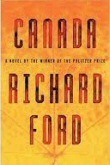 Richard Ford’s latest published novel, Canada, [London: Bloomsbury, 2012] is narrated in retrospect by the 66-year old Dell Parsons and Ford has developed the art of introductory appetite whetting to perfection as is evident in the very first paragraph.
Richard Ford’s latest published novel, Canada, [London: Bloomsbury, 2012] is narrated in retrospect by the 66-year old Dell Parsons and Ford has developed the art of introductory appetite whetting to perfection as is evident in the very first paragraph.
First, I’ll tell you about the robbery our parents committed. Then about the murders, which happened later. The robbery is the more important part, since it served to set my and my sister’s lives on the course they eventually followed. Nothing would make complete sense without that being told first.
Dell’s parents are mismatched. He’s an all-American southern boy with a good war record in the USAAF and she is Jewish. It’s a wartime romance that led to a pregnancy which the parents legitimised by marrying before the arrival of their twins, Dell and his sister Berner – yes, an odd name but that is just grist for Ford’s literary mill which grinds finely and bakes a near perfect cake.
When, demobilised and drifting into Great Falls, Montana, father Bev Parsons gets into trouble selling cattle meat to the railroad on behalf of the Indian rustlers and butchers, he manages to persuade his otherwise intelligent wife that robbing a bank across the State Line in North Dakota is the easy way to solve all their problems, the troubles for the 15-year old twins, as well as their parents, are only just beginning. Within days, the parents are arrested and the mother’s plans for the children go into action. She wants both spirited away up north into Canada, out of harm’s way but Berner runs away and only Dell finishes up in very remote Fort Royal, Saskatchewan, nominally under the eye of, and in the care of, another American expatriate and fugitive, Arthur Remlinger. How does he fell about this? Read the first paragraph of chapter 45.
Loneliness, I’ve read, is like being in a long line, waiting to reach the front where it’s promised something good will happen. Only the line never moves, and other people are always coming ahead of you, and the front, the place where you want to be, is always farther and farther away, until you no longer believe it has anything to offer you.
Like Ford’s other narrator in the Frank Bascombe trilogy, Dell Parsons has a combination of introspection, self-doubt and a love of language that makes the words flow smoothly off the page and, to me, it matters not a whit that the tension and the sense of predestination build and build right up to the turning point less than twenty-five pages from the end. Part Three is a beautifully written coda, easing readers back down nearer the ground and into the present day, but the journey of the first two parts has taken the reader into the depths of his or her own soul.
Over the last few months, I’ve read four of Ford’s novels and it delights me to see there are at least six others to read. Verdict on Canada: 8.5 out of 10.
Canada by Richard Ford: a book review
Richard Ford’s latest published novel, Canada, [London: Bloomsbury, 2012] is narrated in retrospect by the 66-year old Dell Parsons and Ford has developed the art of introductory appetite whetting to perfection as is evident in the very first paragraph.
First, I’ll tell you about the robbery our parents committed. Then about the murders, which happened later. The robbery is the more important part, since it served to set my and my sister’s lives on the course they eventually followed. Nothing would make complete sense without that being told first.
Dell’s parents are mismatched. He’s an all-American southern boy with a good war record in the USAAF and she is Jewish. It’s a wartime romance that led to a pregnancy which the parents legitimised by marrying before the arrival of their twins, Dell and his sister Berner – yes, an odd name but that is just grist for Ford’s literary mill which grinds finely and bakes a near perfect cake.
When, demobilised and drifting into Great Falls, Montana, father Bev Parsons gets into trouble selling cattle meat to the railroad on behalf of the Indian rustlers and butchers, he manages to persuade his otherwise intelligent wife that robbing a bank across the State Line in North Dakota is the easy way to solve all their problems, the troubles for the 15-year old twins, as well as their parents, are only just beginning. Within days, the parents are arrested and the mother’s plans for the children go into action. She wants both spirited away up north into Canada, out of harm’s way but Berner runs away and only Dell finishes up in very remote Fort Royal, Saskatchewan, nominally under the eye of, and in the care of, another American expatriate and fugitive, Arthur Remlinger. How does he fell about this? Read the first paragraph of chapter 45.
Loneliness, I’ve read, is like being in a long line, waiting to reach the front where it’s promised something good will happen. Only the line never moves, and other people are always coming ahead of you, and the front, the place where you want to be, is always farther and farther away, until you no longer believe it has anything to offer you.
Like Ford’s other narrator in the Frank Bascombe trilogy, Dell Parsons has a combination of introspection, self-doubt and a love of language that makes the words flow smoothly off the page and, to me, it matters not a whit that the tension and the sense of predestination build and build right up to the turning point less than twenty-five pages from the end. Part Three is a beautifully written coda, easing readers back down nearer the ground and into the present day, but the journey of the first two parts has taken the reader into the depths of his or her own soul.
Over the last few months, I’ve read four of Ford’s novels and it delights me to see there are at least six others to read. Verdict on Canada: 8.5 out of 10.
Michael Johnston's Blog
- Michael Johnston's profile
- 4 followers



